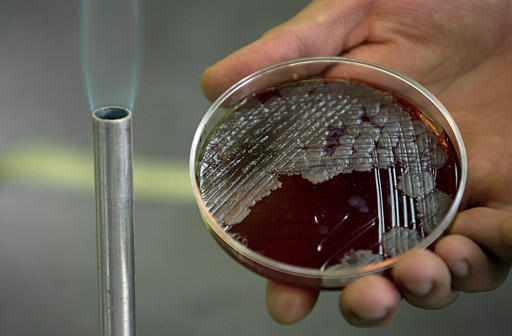
Agricultural News
A Biosecurity Plan Can Reduce Losses from Diseases
Fri, 01 Feb 2013 12:14:21 CST

This article by Deke Alkire appears in the latest newsletter from the Samuel Roberts Noble Foundation.
Infectious diseases cost cattle producers millions of dollars each year through decreased performance, treatment costs and death loss. While not all losses can be avoided, many can be prevented with a good biosecurity plan. Here are some things to consider when developing a biosecurity program for your operation.
Determine the Threat
Each group of animals will have a different level of risk. For example, a virgin bull from a reputable breeder with a complete vaccination and treatment record would pose less threat to your herd than a freshly weaned stocker calf from the sale barn. In addition, a mostly closed herd that produces its own replacements could be at a higher risk than operations that frequently introduce purchased animals. Even healthy animals can be carriers of a disease that could affect naïve herds.
Consider the economic impact of various pathogens and be sure that animals are vaccinated prior to purchase, or be prepared to manage them accordingly to minimize the impact. In any case, gather as much information as possible about the health management and vaccination history before purchasing animals, semen or embryos from an outside source. If possible, have your veterinarian contact the seller's veterinarian prior to purchase.
Prevent Commingling
Manage arrivals to prevent any fence line contact with existing animals for a minimum of 30 days. Do not use common feeding areas and water sources. Some groups may need to be separated longer, depending on the level of risk that the animals pose to your operation and the level of risk you are comfortable with. This could be after an observation period or after negative test results for various diseases.
Bulls and replacement females from a reputable breeder may be able to go into the herd quickly. However, replacement females with questionable backgrounds should be managed as a separate herd until confirmed pregnant with their next calf. For high-risk stocker calves, it is best to manage each group separately for at least 45 days.
Limit Exposure
Pathogens can be transmitted in many ways, including vehicles, people, other livestock, pets and wildlife. Limit equipment use to prevent fecal contamination of feed and water sources. Also, plan your route to feed sick or quarantined animals last. Design facilities to minimize the exposure of healthy animals to sick ones, especially the sick pen, as well as the location of the loading and unloading area. Be aware of who you allow on your operation and where they have been, especially international visitors.
Always dispose of dead animals properly, as soon as possible. Dogs and wildlife are attracted to carcasses and can spread pathogens to healthy animals. Take precautions to prevent exposure to any bodily fluids from these animals. Thoroughly clean equipment and clothes after handling dead animals and avoid contact with other animals.
Sanitation
Keep working facilities, processing equipment and trailers clean. Remove fecal material and bodily fluids after processing or hauling cattle. Dehorners, castration knives, oral tools and ear notchers should be disinfected and palpation gloves changed between animals. Needles should not be used on more than 10 animals and may need to be changed after each use, depending on the risk of transmission and the diseases you are managing against. Always wash your hands and clothes after processing and after exposure to sick or dead animals prior to contact with healthy livestock.
Also prevent or remove fecal contamination from feed bunks and water troughs. Drain and disinfect water troughs as needed or between animal groups.
Develop a Plan
Work with your veterinarian to develop a list of pathogens that you should monitor, test for and/or prevent, both in your existing herd and purchased animals. Outline quarantine, processing and treatment protocols that address biosecurity specific to your operation, including a vaccination program for various groups of purchased animals. Learn to identify foreign animal diseases and have a plan to report them quickly. Also understand which pathogens affect humans and the risks associated.
Consider the costs, benefits and logistics of implementing your plan. It must fit your operation to be successful. Having a biosecurity plan in place will help prevent disease transmission, protect the animals and people on your operation, and improve profitability.
WebReadyTM Powered by WireReady® NSI
Top Agricultural News
More Headlines...




















